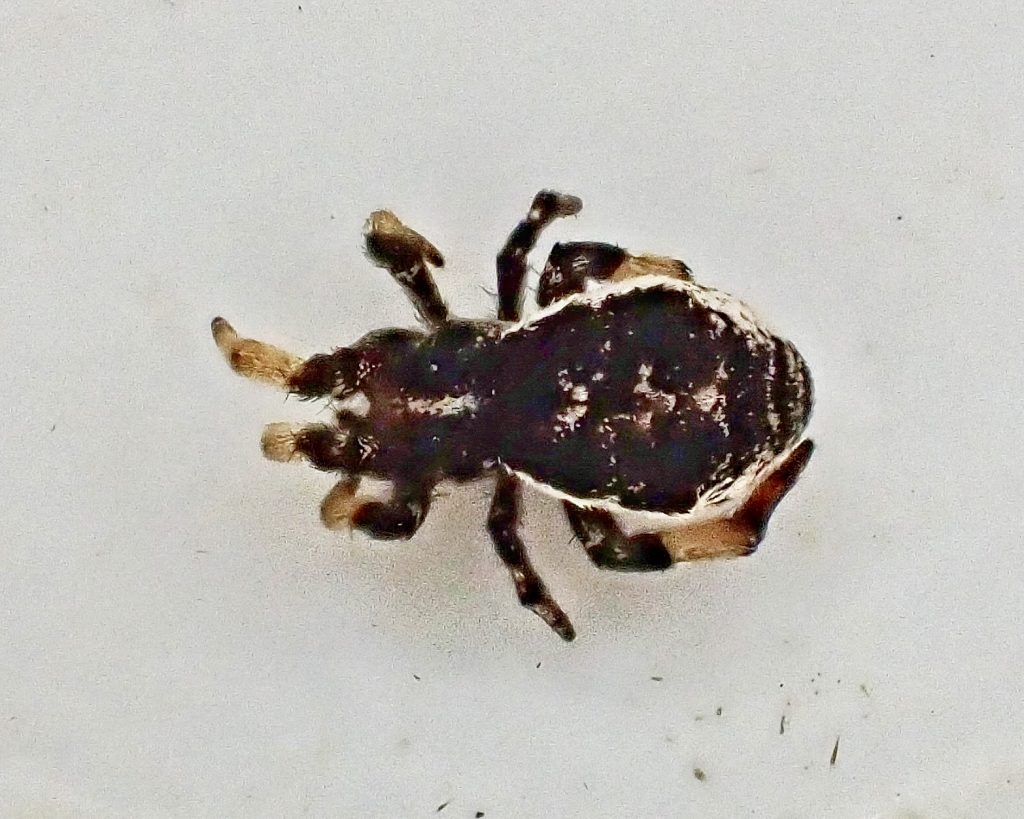
I found this spider on the trip described in ‘In Search of Spiders , but it got lost in the shuffle of processing other, larger species from that day. But a few days ago whilst trying to organize my workbench, I found it again and decided to check it out. And I am so glad I did! This is a very interesting spider, and the first member of the family Uloboridae that I’ve profiled. “The uloborids are also known as the hackled-band orbweavers. They are the only cribellate spiders that spin capturing webs in the form of orbs or portions of orbs.” https://wsc.nmbe.chpdfdownload6273c26f8452d9ccb725b473006bb174SRSyAT9IdHDo4Ex.
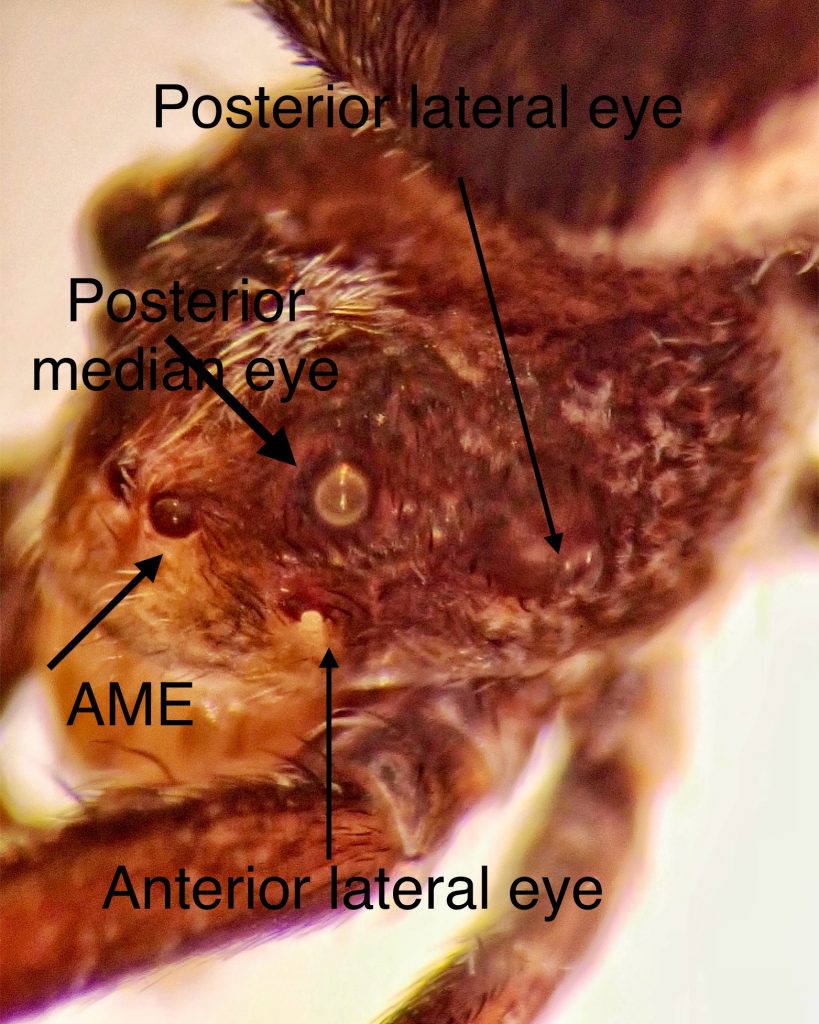
This identification probably wouldn’t have been as confusing to me if I could remember exactly where I found it, was sure that it was a mature female, had had more faith that what I was seeing was actually a cribellum, calamistrum (I’d never seen either of them before, this being the first cribellate spider I’ve tried to identify), and 3 clawed tarsi, and if the only match I could find for this very odd eye arrangement wasn’t a genus (Selenops) that doesn’t have a cribellum and isn’t found in the PNW. But after a few hours of puzzlement I gave up and sent all of the photos I had to Rod Crawford, who replied “Hyptiotes gertschi (only member of that genus in our region). Cribellum and calamistrum? Yes! Epigynum? Yes, she appears to be a mature female; the epigynum in this species is partly hidden and perpendicular to the abdomen, so not that easy to see. Totally bizarre eye arrangement? Yes! Orb web? Only a segment of one!”
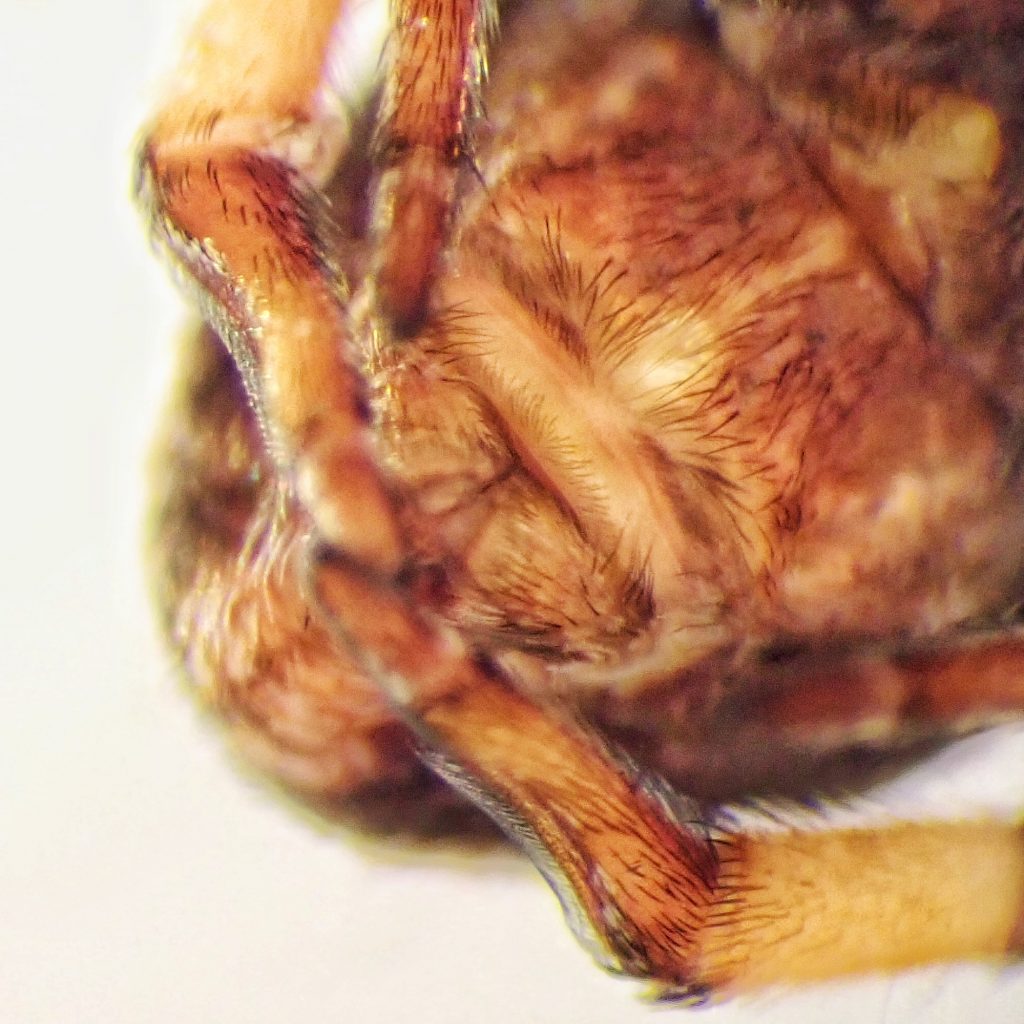
If I’d remembered the web where I found this, that would have been a dead giveaway, because Hyptiotes build a triangular web (hence the common name ‘triangle web spiders’ for members of this genus; iNaturalist calls this species Gertsch’s triangleweaver, but I didn’t see that name anywhere else) with a single line going to an attachment point, and rather than trying to directly subdue any prey that blunders into the web, they release tension on the web so that it collapses around the prey and entangles it. “Members of the genus Hyptiotes build webs in the lower branches of coniferous trees often among dead twigs in the tree’s interior, although occasional specimens may be found in the underbrush or even on cliffs or in ravines. The webs are triangular in form, being three 45°- 60° sectors of an orb. There are four radii with 10 or more sticky lines laid across them. The radii arise from the bridgeline, on which the spider hangs, venter uppermost, with its frontlegs pulling the web taut. Release of the tension is cued by the presence of an insect prey in the web, and the spider feeds on both prey and silk. Egg sacs are attached to the twigs in late summer and early autumn. Spiderlings emerge in the spring.” https://wsc.nmbe.ch/pdfdownload/f5bae2e6150b59ac688355210a3bf7d0iSqZbh82SlmEQaB
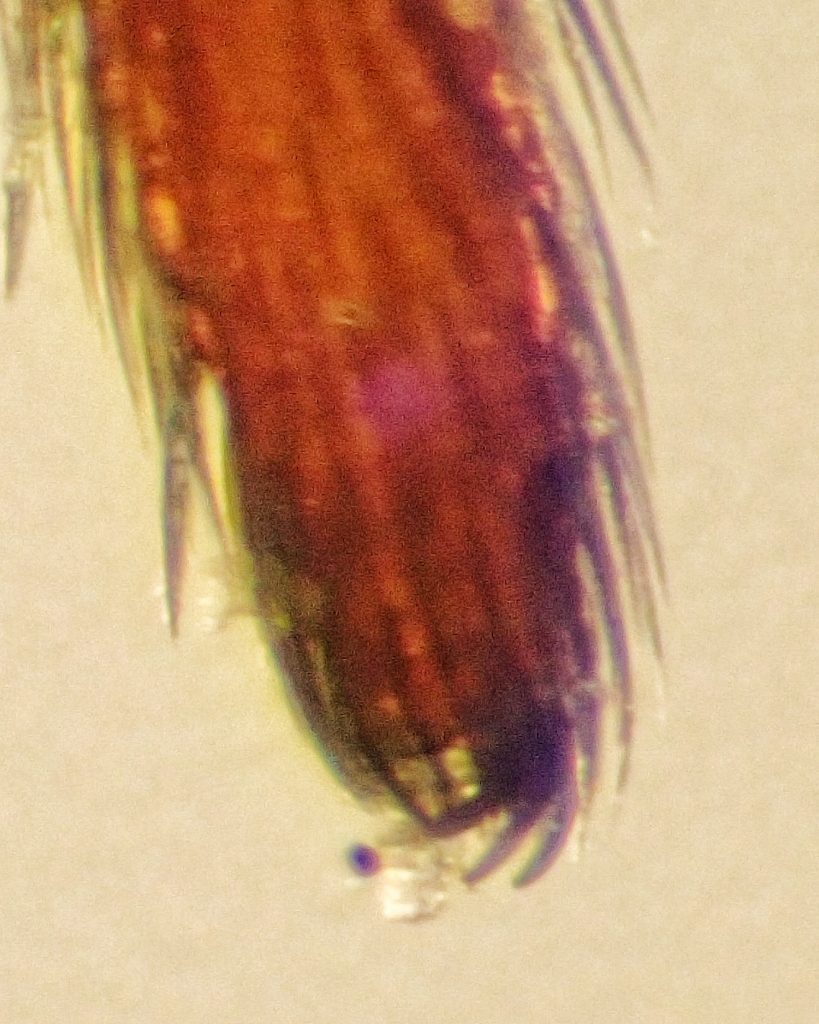
Even more unusual is that the members of Uloboridae are the only spiders in North American that do not have venom glands. “Lacking venom glands, these spiders first thoroughly wrap their prey and then kill it by grasping it with their palpal claws and pouring digestive juices over it. The chelicerae are little used in feeding, and their usual function of piercing and kneading the prey is replaced by a greater use in wrapping silk. This thick wrapping of silk by which the spider enmeshes its captures may also be digested as feeding progresses (Opell 1979). https://wsc.nmbe.ch/pddownlof5bae2e6150b59ac688355210a3bf7d0iSqZbh82SlmEQaB. “Uloborids employ a distinct hunting method involving extensive silk-wrapping and regurgitation of digestive fluids onto the whole prey, yet the precise mechanism by which prey is immobilized remains unknown. One hypothesis is that toxins may have shifted from the venom to other secretions that come into contact with prey, such as silk or digestive fluids.” https://www.biorxiv.org/content/10.1101/2023.06.26.546488v1
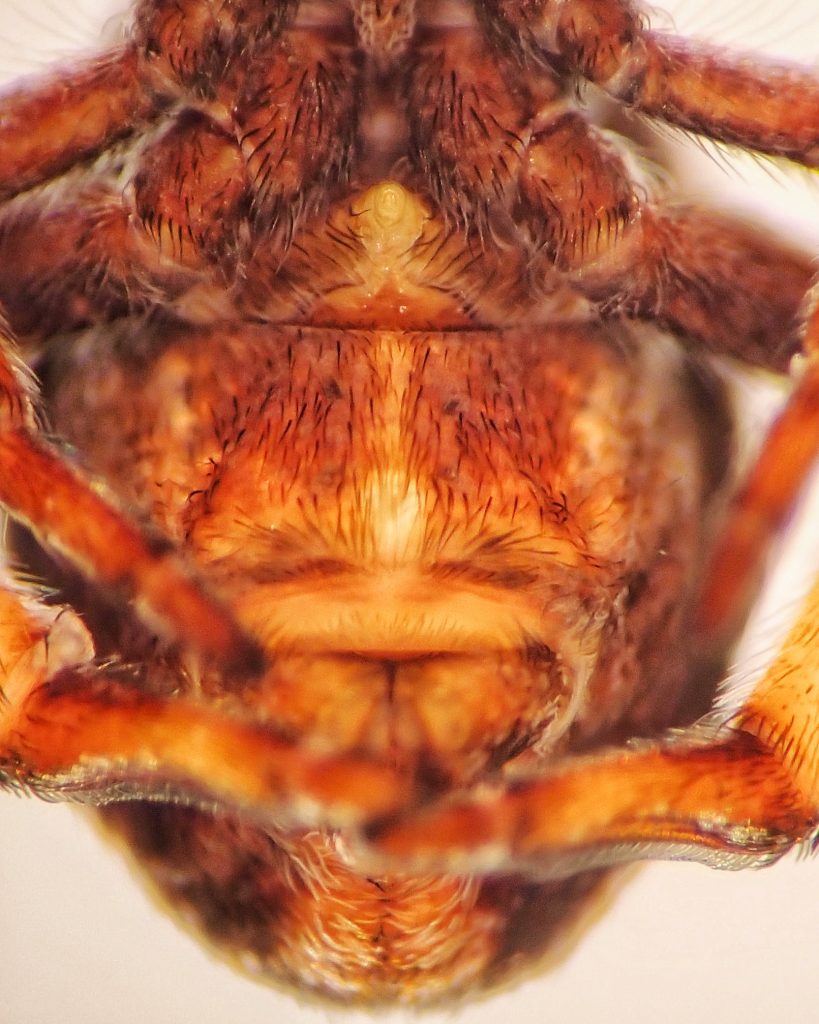
Description– Small (2-4.5mm) spiders with a trapezoidal carapace, posterior lateral eyes on tubercles, and anterior lateral eyes very tiny and situated almost directly below the posterior median eyes; has an undivided cribellum, and calamistra extending over half of a dorsally concave metatarsi 4; legs 1,2 & 4 with light colored tibia, and 1 & 2 with light colored metatarsi; females have 2 tubercles on the abdomen, males have only one; as far as color and patterns, Rod Crawford says- “This species has an astounding array of completely different color patterns, but all with the same genitalia.”
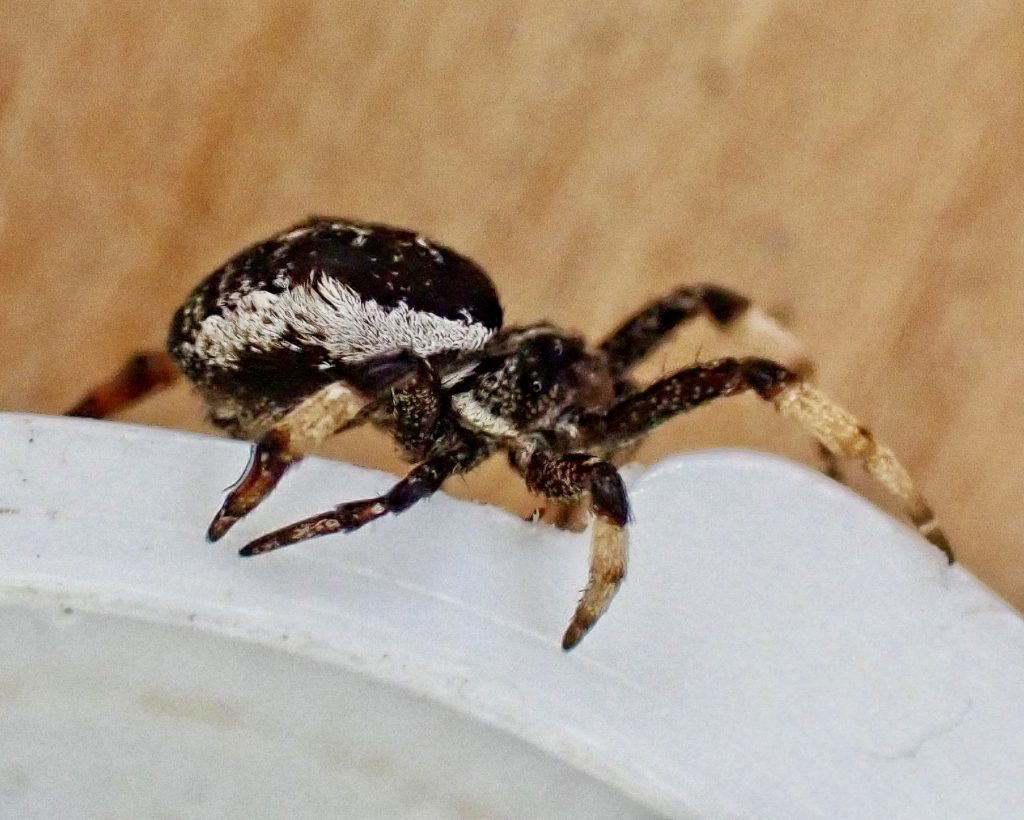
Similar species– This is the only member of Hyptiopes in our region; other Uloboridae genera do not have posterior lateral eyes on tubercles; other cribellate spiders do not have the combination of an undivided cribellum, calamistra that extends over half of metatarsus 4, and metatarsus 4 being dorsally concave; members of the families Tetragnathidae, Araneidae, Theridiidae, and the other ‘orb weavers’, all lack a cribellum.
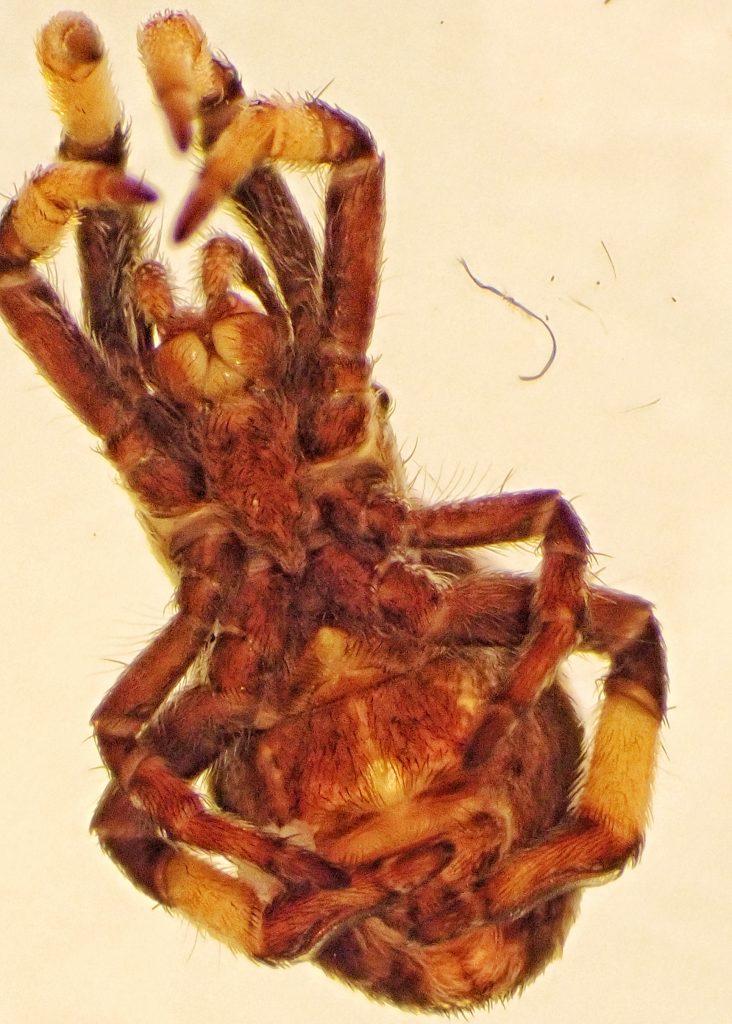
Habitat– “Hyptiotes gertschi is abundant on dead branches of pines and other conifers in southern Ontario, and in the western United States it uses these habitats as well as suitable stations on clifs,in ravines, and under bridges.” https://wsc.nmbe.ch/pdfdownload/6273c26f8452d9ccb725b473006bb174SRSyAT9IdHDo4Ex
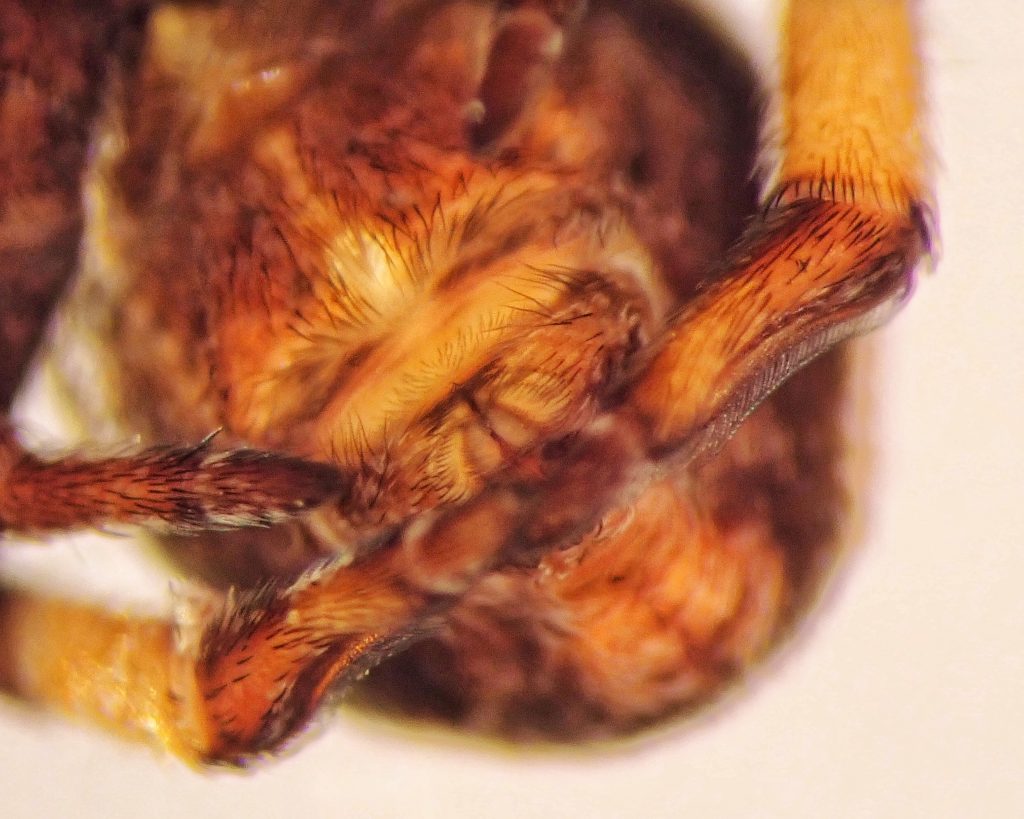
Range– “All across Canada and along the Pacific Coast from southern Alaska to southern California. Some records for the inland Western states and appears to overlap with H. cavatus in New England.” Species Hyptiotes gertschi – BugGuide.Net ; from BugGuide and iNaturalist records it seems to be most commonly found west of the Cascades in the PNW, but it is probably present in forests throughout the region; Observations · iNaturalist
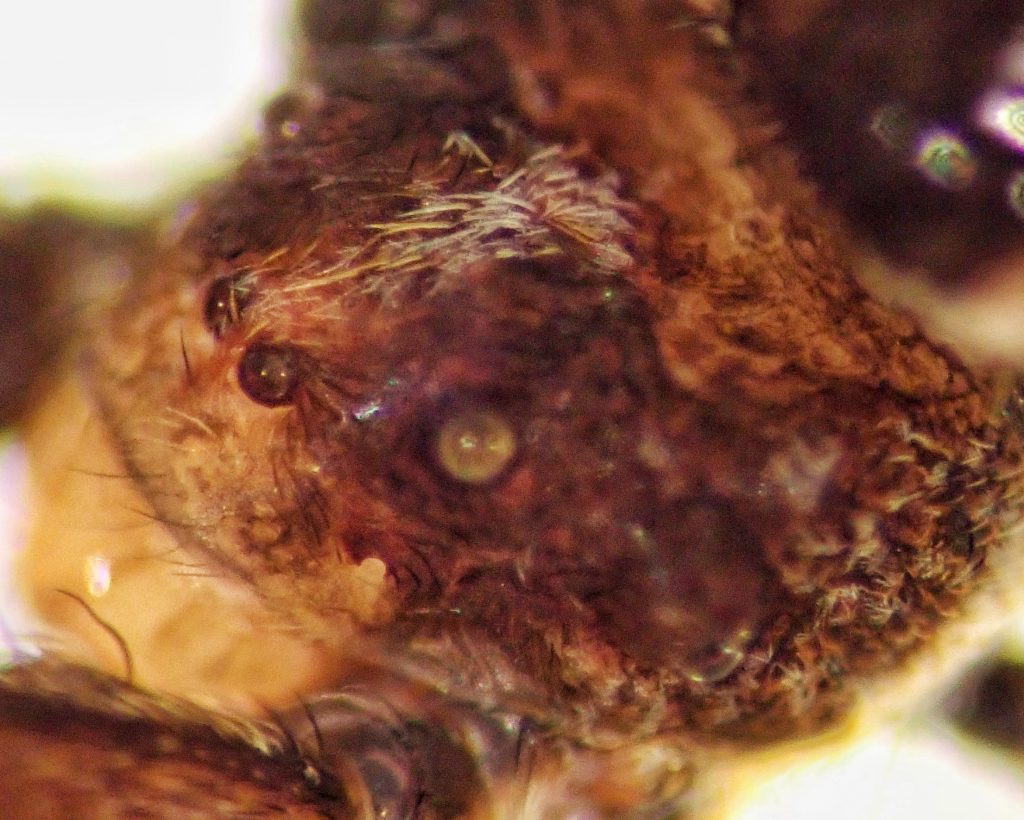
Eats– Presumably anything that they can trap in their web and subdue.
Eaten by– Presumably a host for parasitoids in Hymenoptera and Diptera, and probably preyed upon by insectivores of all classes, but I can find nothing specific for this species.
Adults active– Adults are most common from late spring into winter.
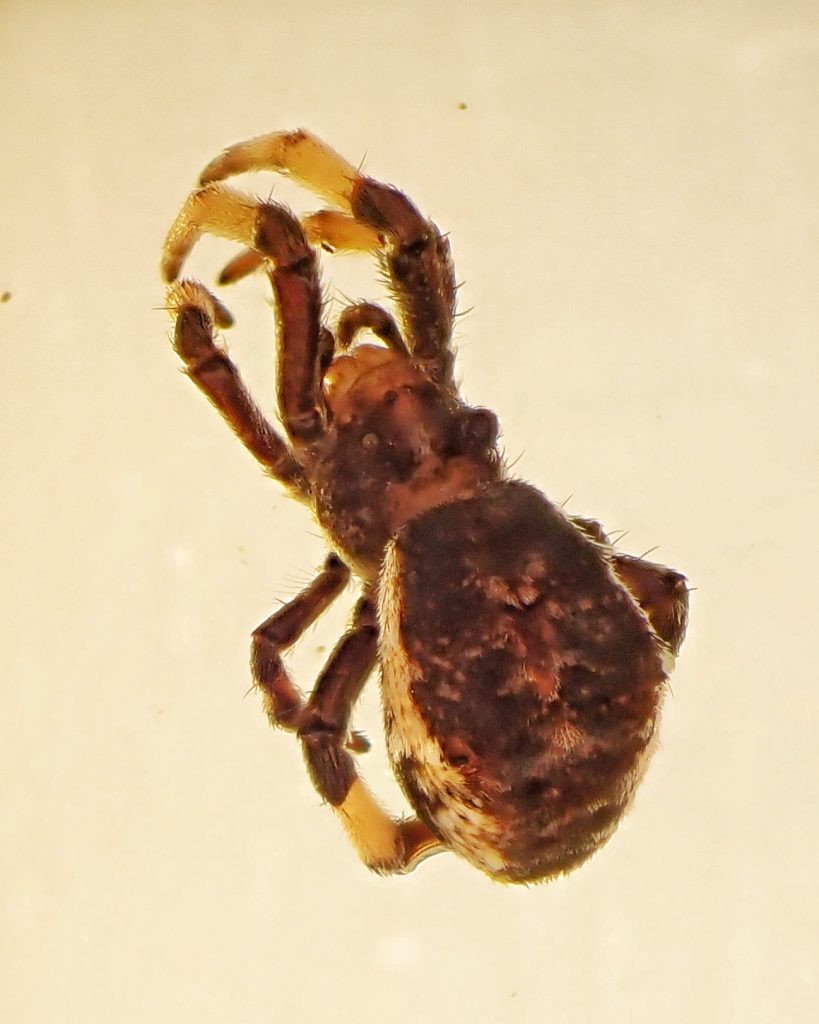
Life cycle– “The species of Hyptiotes are presumed to be annual spiders that replace themselves each year. Both males and females are mature in the summer and fall.” https://wsc.nmbe.ch/pdfdownload/6273c26f8452d9ccb725b473006bb174SRSyAT9IdHDo4Ex “…male triangle web spiders are known to run a thread to the female’s web and strum it as part of their reproductive repertoire…The oval egg sacs of the triangle web spiders are covered in an outer layer of dusky, grayish silk and are placed flush against the sides of small twigs where they look like little more than slight swellings on the bark.” RJ Adams; “Field Guide to the Spiders of California and the Pacific Coast States”; 2014.
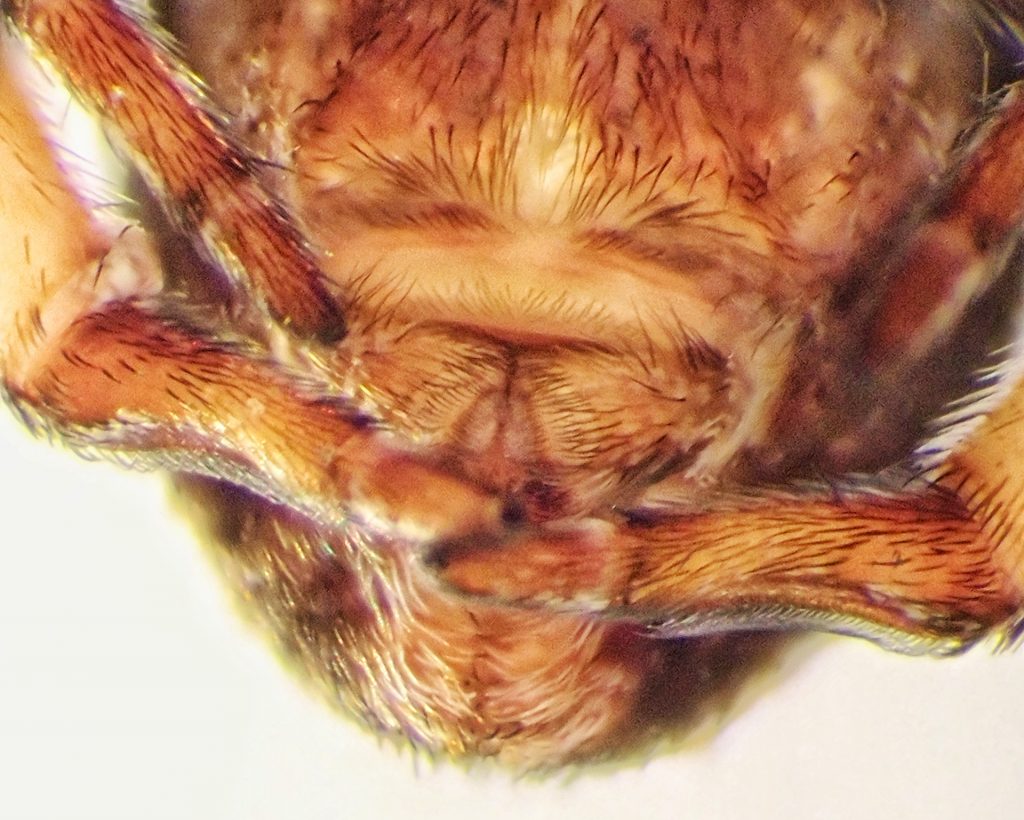
Etymology of names– Hyptiotes is from a muddled version of Greek words which would mean ‘lying on one’s back’, and refers to this species hanging upside down, attached to the single thread connecting its web to the attachment point. The specific epithet gertschi probably honors Willis_J._Gertsch (1906-98), who described over a thousand species of arachnids, and was Curator of Arachnids at the American Museum of Natural History, although Chamberlin/Ivie do not actually state this connection.
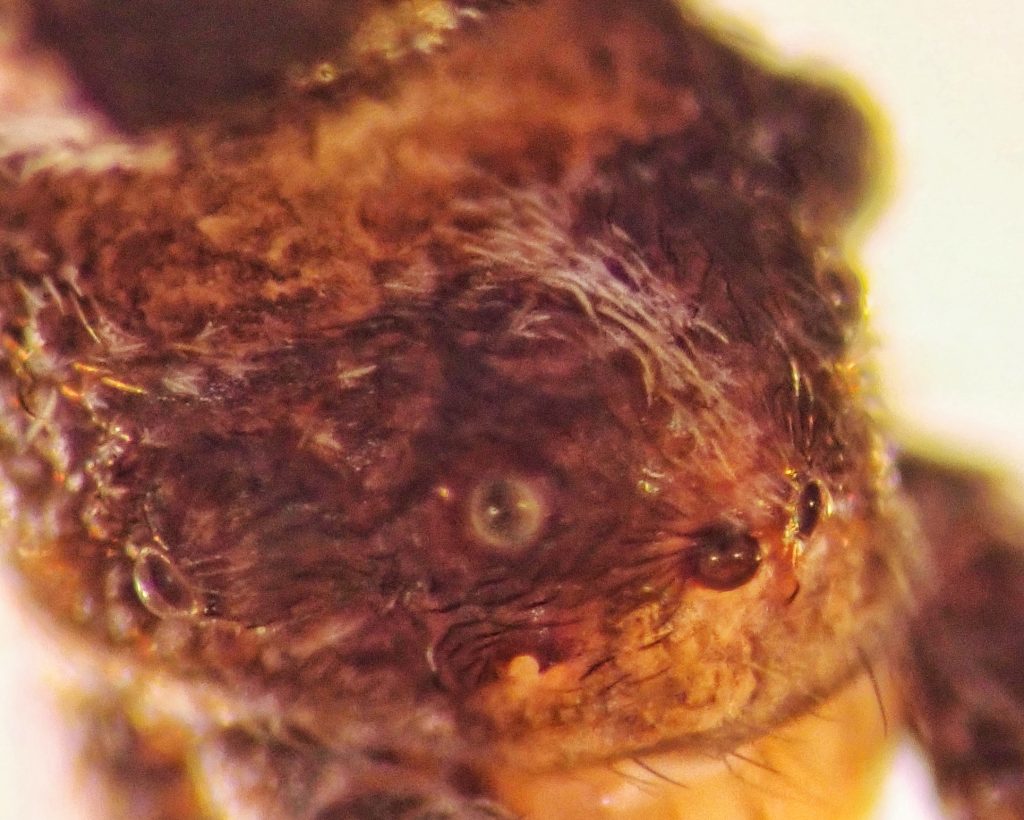
Species Hyptiotes gertschi – BugGuide.Net
https://wsc.nmbe.ch/pdfdownload/f5bae2e6150b59ac688355210a3bf7d0iSqZbh82SlmEQaB
https://wsc.nmbe.ch/pdfdownload/6273c26f8452d9ccb725b473006bb174SRSyAT9IdHDo4Ex
https://www.biorxiv.org/content/10.1101/2023.06.26.546488v1
Gertsch’s Triangleweaver (Hyptiotes gertschi) · iNaturalist
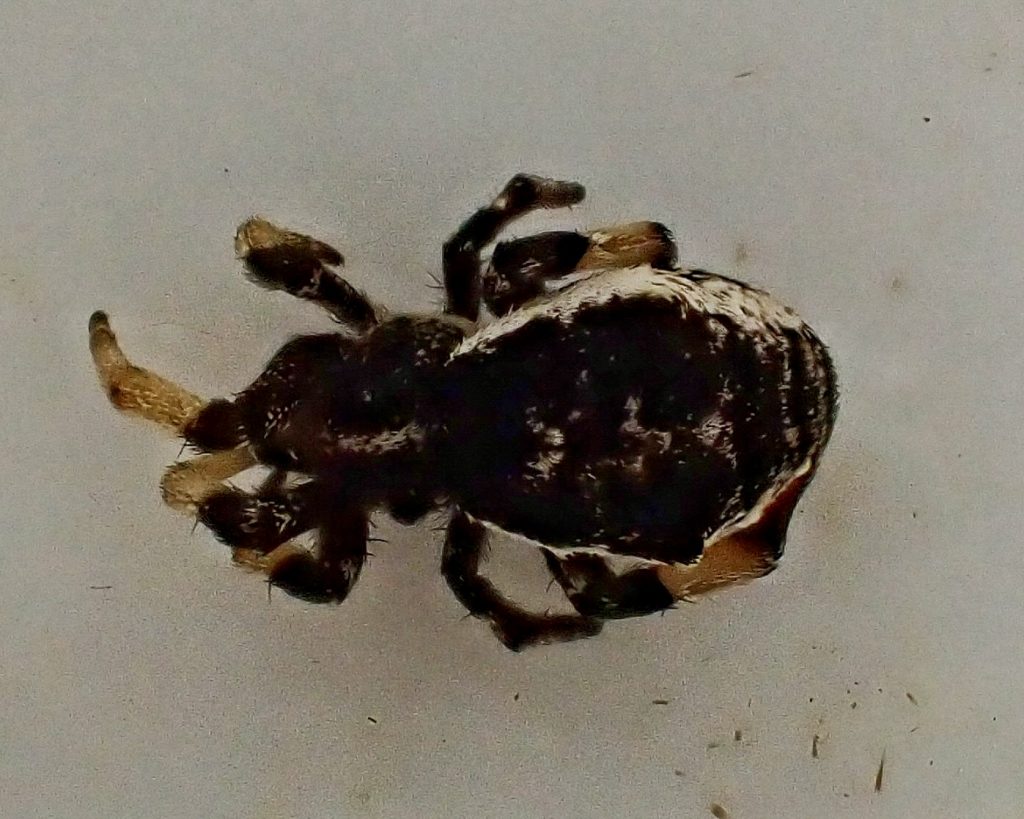
On the etymology: Willis Gertsch had been Ralph Chamberlin’s student, and although their relationship was a little fraught (Gertsch regarded Chamberlin as “mean”), they named several species after each other.
Thanks for the clarification, Rod!